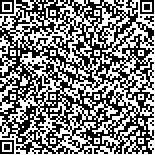| 本文已被:浏览 1855次 下载 739次 |

码上扫一扫! |
|
|
| 含孔隙三维四向编织复合材料力学性能的双尺度分析 |
|
齐泽文1,胡殿印1,2,3,张 龙1,曾雨琪1,王荣桥1,2,3
|
|
(1. 北京航空航天大学 能源与动力工程学院,北京 100191;2. 先进航空发动机协同创新中心,北京 100191;3. 航空发动机结构强度北京市重点实验室,北京 100191)
|
|
| 摘要: |
| 为了更精确地对含孔隙三维四向编织复合材料的力学性能进行预测,基于双尺度分析方法分别研究了纤维束中的干斑和基体中的孔穴对三维四向编织复合材料宏观力学性能的影响。在纤维束微观尺度上,采用通用单胞法来预测纤维束等效力学性能参数。在编织结构细观尺度上,利用代表性体积单元(RVE)和细观力学有限元法预测得到宏观等效弹性常数。将上述计算结果与文献实验数据进行对比,验证了双尺度分析方法的正确性。采用Monte-Carlo仿真技术在模型中投入气孔单元,分别在纤维束和基体中模拟干斑和孔穴,讨论了两种孔隙缺陷对三维四向编织复合材料力学性能的影响规律。结果表明:孔隙缺陷率对三维四向编织复合材料力学性能有较大的影响,且纤维束中的干斑较基体中的孔穴相比影响更大;在给定孔隙缺陷率(P_mv=P_fv=4%)情况下,沿编织方向弹性模量仅从13.6GPa变化到14.2GPa,说明孔隙的位置分布对沿编织方向的弹性模量影响很小。 |
| 关键词: 三维四向编织复合材料 孔隙缺陷 双尺度 材料性能预测 |
| DOI: |
| 分类号: |
| 基金项目:国家自然科学基金(51675024;51305012;51375031);国防基础科研计划资助(B2120132006)。 |
|
| Two-Scale Analysis for Mechanical Properties of 3D Four-Directional Braided Composites with Pore Defects |
|
QI Ze-wen1,HU Dian-yin1,2,3,ZHANG Long1,ZENG Yu-qi1,WANG Rong-qiao1,2,3
|
|
(1. School of Energy and Power Engineering,Beihang University,Beijing 100191,China;2. Collaborative Innovation Center for Advanced Aero-Engine,Beijing 100191,China;3. Beijing Key Laboratory of Structural Strength of Aero-Engine,Beijing 100191,China)
|
| Abstract: |
| In order to predict the mechanical properties of 3D four-directional braided composites with pore defects more accurately, this essay studied the effects of dry patches in fiber bundles and voids in matrix on the macroscopic mechanical properties of the three-dimensional four-direction braided composites based on the two-scale analysis method. Firstly, generalized method of cells was used to predict equivalent mechanical properties of the fiber bundles at micro-scale. Then, the macroscopic equivalent elastic constants were predicted by representative volume element (RVE) and meso-mechanical finite element method in braided structure on mesoscale scale. The predicted results were in good agreement with the available experimental data, demonstrating the applicability of the two-scale method. Finally, pore elements was distributed by Monte-Carlo technique simulating dry patches elements in fiber bundles and voids elements in matrix in 3D four-directional braided composites RVE model to discuss the influence of two kinds of defects on the mechanical properties of 3D four-directional braided composites. The results show that the defects have great influence on the mechanical properties of 3D four-directional braided composites. Dry patches in fiber bundles have more significant effect on the elastic properties than voids in matrix. In the case of given porosity (P_mv=P_fv=4%), the elastic modulus of the weaving direction only increased from 13.6GPa to 14.2GPa demonstrating that the positional distribution of defects has little effect on the modulus of elasticity in the braiding direction. |
| Key words: 3D four-directional braided composites Pore defects Two-scale Material property prediction |